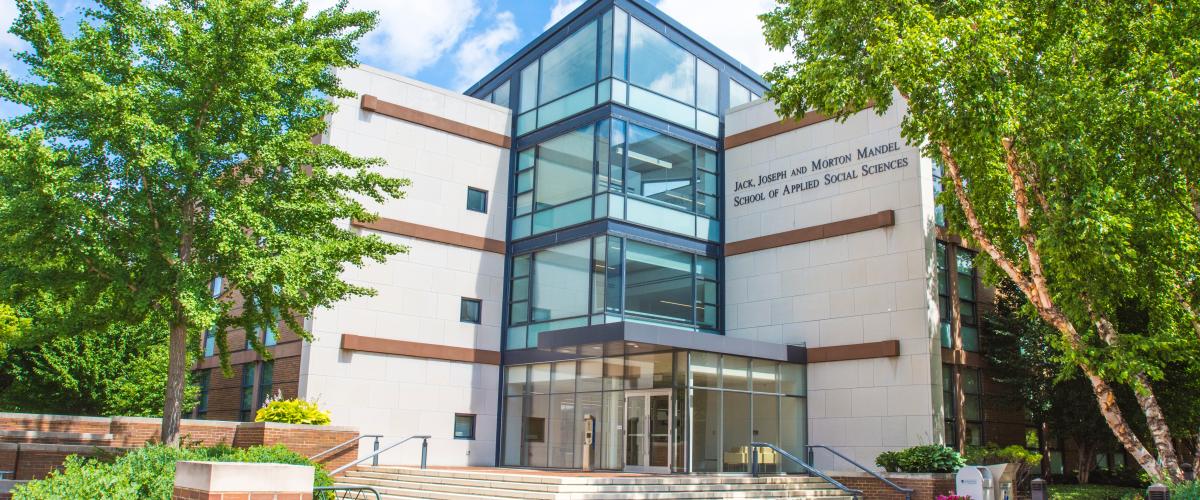November is Nonprofit Awareness Month, a time that celebrates and promotes the support of nonprofits in the United States. This month is especially relevant to Cleveland, which has a long and thriving history of nonprofit innovation—the city is the birthplace of the first community chest (a predecessor of the United Way) in 1913, created the first community foundation in the world (the Cleveland Foundation) in 1914, and is home to a world-renowned healthcare infrastructure.
It comes at no surprise then that Cleveland's economic prosperity and wealth during the early part of the 1900s also spawned an active philanthropic movement here, resulting in over 2,000 nonprofits in the Greater Cleveland area today. It’s also why the Jack, Joseph and Morton Mandel School of Applied Social Sciences began offering the Master of Nonprofit Organizations (MNO) program—it’s one of the first nonprofit leadership programs in the U.S. and one of just nine graduate programs to be fully-accredited by the Nonprofit Academic Centers Council.
Now more than ever, managing nonprofit organizations requires a commitment to doing good plus the skills to carry out an agenda of change.
In honor of Nonprofit Awareness Month, we’ll be spotlighting some of our MNO students and alumni.
Answers have been edited for clarity and length.
Jill Paulsen (MNO ’04)
- Alumna, Mandel School/Weatherhead School of Management
- Executive Director of Cuyahoga Arts & Culture (CAC), one of the largest local public funders for arts and culture in the nation, helping hundreds of organizations in Cuyahoga County connect millions of people to cultural experiences each year. In 2023 they will provide nearly $12M to 300 local nonprofits using arts to strengthen the community.
1. What are you most proud of having accomplished at your nonprofit organization?
The arts were the first to be devastated by the pandemic and we’re still feeling the pain of lost revenue, cuts in staffing and canceled programs. Nevertheless, the nonprofit leaders we support made smart decisions and worked hard to continue serving residents. This commitment to servant leadership extends to my small but mighty team at CAC. Throughout the pandemic we became more flexible in our grantmaking and we stayed focused on our commitment to racial equity in our operations—nearly 80% of our funding for artists is going to Black and Brown creatives, and we’ve tripled the number of BIPOC-led/-serving grantees in recent years.
2. What is the biggest challenge of working in the nonprofit sector?
Working in a true coalition. We’re all trying to tackle issues and solve problems that one 501c3 or government entity can solve alone, so this requires setting aside egos and aiming for a shared common goal. I find a challenge (but some reward) in trying to influence people and systems where I don’t have positional power. To be successful in these coalition settings, you must build trusting relationships.
3. What led you to attend the Mandel School, and how has your CWRU experience prepared you to work in the nonprofit sector?
I moved to Cleveland to get my MNO because I wanted a business school degree that was rooted in the realities and values of working in the civic sector. The program was very interdisciplinary—I took classes at the law school, business school and social work school. Each school prepared me to step into nonprofit and public sector leadership. Going to Case Western Reserve also helped me build an immediate network in Cleveland, where I was new. The classmates I met in the MNO program are people I rely on today to move my agency’s mission forward.
4. What is your favorite memory of CWRU?
I had the honor of introducing Steven A. Minter, former CEO of the Cleveland Foundation, at my MNO graduation. His advice to “get into orbit” and connect with others in order to get things done in the community still sticks with me today. He was on CAC’s Board when I first joined the agency, and he remained a mentor to me until his passing in 2019. I also played a lot of pick-up soccer games at Veale and where the Tink is now—it was the perfect outlet to balance the stress of work and school.
5. What advice do you have for others hoping to work in nonprofit organizations?
Use your time at Mandel/CWRU to do as many hands-on projects as possible. I did work with over a dozen nonprofits for my MNO classes. It helped me learn the local nonprofit landscape and better understand what I wanted (and didn’t want) to do. Also, volunteer or serve on nonprofit boards/help at their special events. This gives you the ability to lead in a different way and build new skills. It’s also a way to make connections you may need to find a job in the sector.
6. Knowing Cleveland is unusually supportive of the nonprofit sector, can you talk a bit about philanthropy in Cleveland?
I’ve been lucky to work at The George Gund Foundation and The Cleveland Foundation following graduation from CWRU. Those roles gave me a close-up view of how important (yet sometimes fickle) philanthropy can be. Even now from my seat in public sector funding, I see firsthand how changing leadership and shifting priorities at grantmaking institutions can impact nonprofits. That said, philanthropy is an important part of the landscape, often filling the gap of declining corporate giving. For folks considering work in fundraising and development, learn and work the local philanthropy landscape but don’t lose sight of where most nonprofit funding comes from: government funding/contracts and individual donors.
7. What are some meaningful ways someone can celebrate Nonprofit Awareness Month?
Vote! Policy and structural change are where it’s at. And volunteer. Donate your time to the nonprofits you care about or go see their work and participate in their offerings. Cleveland Arts Events lists shows, festivals, arts classes and so much more, and if you want to learn about any of the nearly 300 nonprofits my agency funds, visit cacgrants.org.
This story appeared in The Daily on Nov. 29, 2022.




